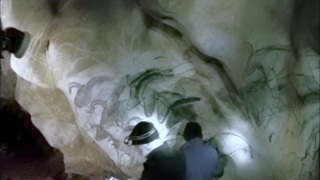
Back at it again, and so many months later! I made well-intentioned efforts of documenting the last ten months, but draft after draft describing quarterly updates have piled up. In an upcoming post, I’ll tell you about work to be performed (!) or published, and about pieces I had the pleasure of editing or referring. I also want to tied up loose ends on the future-is-in-the-name projects that got underway last fall, Futures and the Futures Market, with reflections on the critical response to the latter and the future of the former.
For now, I’d at least like to break the dirty blogging ice with some thoughts adapted from a brief post written last winter, in an attempt to articulate what has been unifying different strands of work in my corner. This felt like a good time to resurrect it, given some gnarly knots in the tech- world (see: recent fiasco with Microsoft’s trollish chatbot), and interesting entries in film world (from the very dissectable Ex Machina and Under the Skin to the nauseating casting news about the remake of Ghost in the Shell).
I wanted to talk about, around, two fields, or stretches of motion, that feel very important at this moment. The first: the cyclic journeys that humans make back and forth between the real and uncanny, and how these journeys to the Other Valley change how we think, feel and relate to others in our day to day lives.
The developments that come out of this journey include: creating a form of clinical poetics that can better articulate the beauty of code and systems; powerful and novel conceptions of what the human brain is capable of; and (last, not least), a more subtle understanding of our unfamiliarity to ourselves, gained through looking at the strange head on.
The second field: love of, and relationships with, things and creatures other than people, particularly different forms of artificial intelligence. There are big questions to answer: how do we empathize with artificial objects? Should we actively seek out this relationship? How does this act of imaginative empathy with the non-human deepen (or not) our patterns of thinking and expand (or constrict) our feeling? What do we learn about ourselves in learning about what is both of us and increasingly, not of us?
Both of these fields place a specific kind of pressure, at times immense, on the poor and lovely little human form. The journey to the uncanny valleys and the many plateaus and landfills of things might put the most pressure on us. No imaginative act taxes me more than trying to articulate what it means to be an animal, a piece of hardware, a cyborg, a thing.
Completing this circle, or attempting to, has been the work of philosophers for some time. But at no moment before now have we been so intimate with things. We are pressed up against intelligence systems that we built, while still riven through with all the weaknesses and failures that we would have already had without this new intimacy.
I have been returning to these two fields repeatedly over the past few years, encountering the same questions whether I am dealing with games, music, film, literature or the field of criticism in general.
Most people are not deeply invested in elite coding or programming. We might only have only a peripheral interest in what Big Data means for society and culture. We are all bound, though, in how we are largely all implicated in and tied to the demands of artificial intelligence.
I believe our relationship to AI and to the uncanny can only, on the whole, make us better people, who are more articulate, more humane and compassionate, and more intelligent.
If the pressure of an Art Bot that does some aspect of my actual job will push me to define and demonstrate myself as creative, expressive and spontaneous, so be it. I crave this pressure, this competition, because I want to be better and I want to express myself more clearly. The work of life and self-improvement is never over. Embrace the challenge!
The new knowledge we gain through technology applies pressure on the known, on our habitual ways of speaking and thinking. We’re forced to change. Language expands. The matrix of social relations around us becomes more complex as we can reach people on other continents at any time of day or night to talk about our shared interests, whether weird niche trade forums or learning to rock climb.
If I loosely know 5,000 people and this is 4,000 people more than I knew a few years ago, my brain has to have changed to accommodate all the knowledge I have about these people. There’s plenty of initial research to describe these changes.
A recent piece by Yoha describes the fascinating phenomenon of palinopsia:
I decided to take a drug holiday from anti-depressants and high blood pressure tablets. It was during this vacation that I began to notice the after-image, or Palinopsia, created by staring intently at my monitor while replying to a never-ending stream of email. Apparently, the photoreceptors in your eyes exhaust their supply of photo-pigment and become numb, resulting in a decrease of signals to the brain and a lingering image in one’s field of vision. Staring motionless at inconsequential information programs the eye to retain an afterimage; regardless of whether the eyes are closed or change focus to look elsewhere, a small square of color remains on the retina. I decided to try this technique in the office. I would sit motionless, staring into the abyss of email with a fixed gaze. For one hour, I tried not to blink; then, as someone entered the room and asked me some meaningless administrative question, I would frame them with the afterimage of the screen, enjoying the aesthetics of my eyes’ dysfunction, and completely ignore them.
The after-image created by looking too intensely at one’s computer monitor is a result of definitive pressure: pressure on the eyes’ capacity to process “inconsequential information programs” for hours and hours on end.
The block of color lingering on the retina produces an aesthetics of momentary dysfunction, a (quite literal) new way of seeing, if only for a moment or two.
Where you spend your time and energy changes you. What you spend time with changes your speech and changes how and where your eyes look when they shift from the screen, for better or for worse.
We wake up in thrall to applications that chart our health to make us better people. We might spend significant portions, if not the majority of, the day in front of our computers and phones.
When I go to sleep, I can feel my brain buzzing with the hundreds of half-read pieces and half-started ideas and conversations I began during the day. Tabs and conversations proliferate like a hydra that the brain strives to cut down and resolve to no avail. I wake up, and try my best to continue the conversations of the day before, and maybe finish a thread or two lost in the days before that. The landfill of unfinished conversations piles up, a new psychic weight.

Another experiential aspect I’ve felt changing as a result of all this pressure is my attention span, which has changed dramatically over the past years. The results, however, are positive. I find myself far more attentive to my surroundings when unplugged. I notice different aspects of people than I did before.
Example: if I’ve spent five hours reading about people who live with dolls, then I’m more primed and ready to sympathize with the odder side of a debate or person or whatever the subject may be, in flesh space. (Note: I vow to do my best not to shamelessly crib Gibson in writing about cyberspace).
When I log off, I am more hyper-attentive to language and meaning in conversations with others. I am also far attuned to how a person might respond to what I say, because I have to practice just the same when talking online to others in far more volatile and reactive forums.
How we are changed, molded and shaped by our relationships to different manifestations of artificial intelligence has always been of enormous interest to me. This began when I was little, an only child, who spent a lot of time in the virtual worlds of Quake and Doom. How healthy this immersion was, and continues to be, is debatable. I am still learning about other ways to be.
I may not have always been able to articulate my comfort in these worlds over “real life” perfectly, particularly when I was young. Then, they were both a source of psychological comfort and complete escape.
But I now have the language and metaphors to describe this relationship and immersion. I also have the distance that adulthood imposes, the space to understand why a pull to experience such strange yet intimate pressure exists. I hope I can thoroughly explore that pull.

Leave a comment